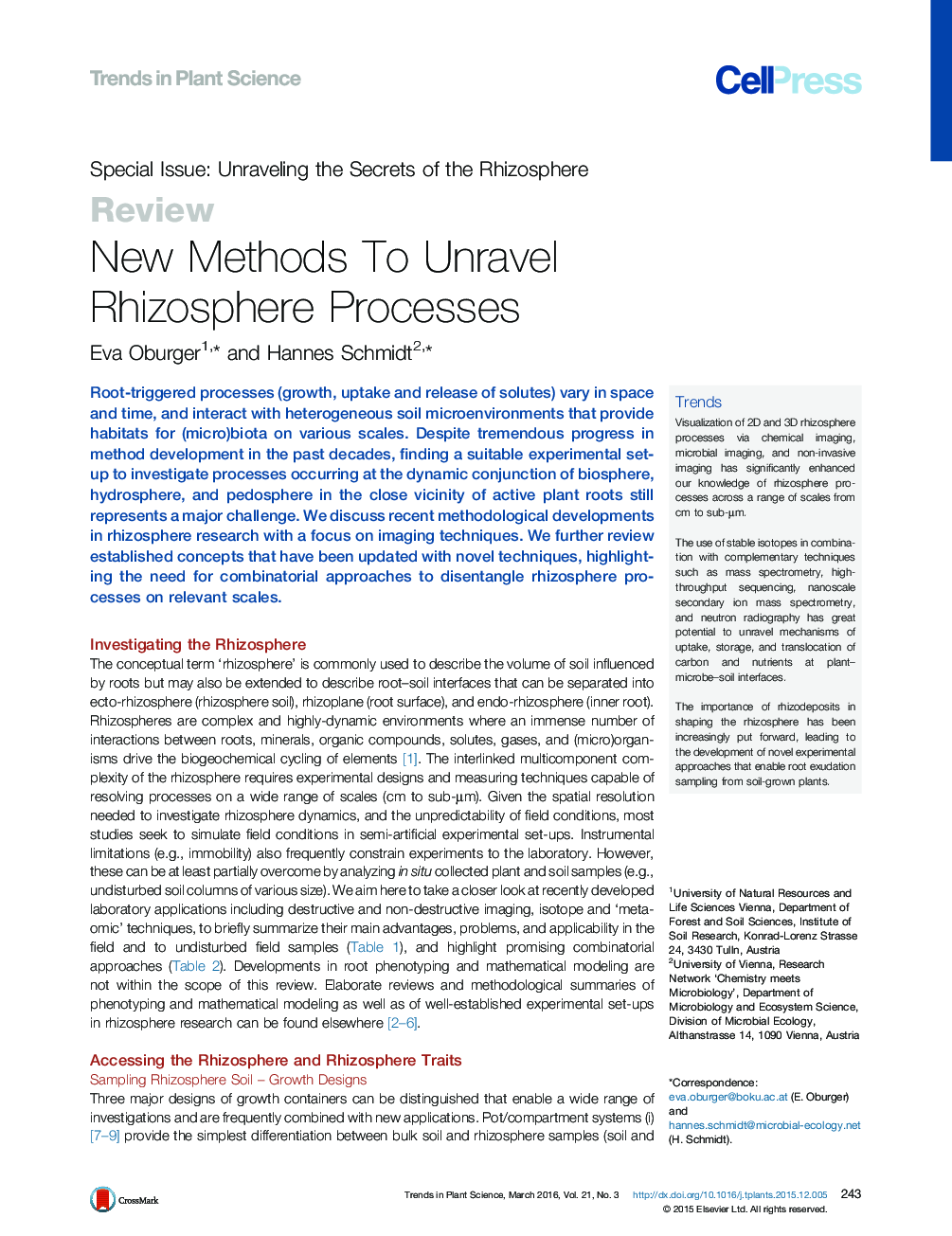| Article ID | Journal | Published Year | Pages | File Type |
|---|---|---|---|---|
| 2825751 | Trends in Plant Science | 2016 | 13 Pages |
Root-triggered processes (growth, uptake and release of solutes) vary in space and time, and interact with heterogeneous soil microenvironments that provide habitats for (micro)biota on various scales. Despite tremendous progress in method development in the past decades, finding a suitable experimental set-up to investigate processes occurring at the dynamic conjunction of biosphere, hydrosphere, and pedosphere in the close vicinity of active plant roots still represents a major challenge. We discuss recent methodological developments in rhizosphere research with a focus on imaging techniques. We further review established concepts that have been updated with novel techniques, highlighting the need for combinatorial approaches to disentangle rhizosphere processes on relevant scales.
TrendsVisualization of 2D and 3D rhizosphere processes via chemical imaging, microbial imaging, and non-invasive imaging has significantly enhanced our knowledge of rhizosphere processes across a range of scales from cm to sub-μm.The use of stable isotopes in combination with complementary techniques such as mass spectrometry, high-throughput sequencing, nanoscale secondary ion mass spectrometry, and neutron radiography has great potential to unravel mechanisms of uptake, storage, and translocation of carbon and nutrients at plant–microbe–soil interfaces.The importance of rhizodeposits in shaping the rhizosphere has been increasingly put forward, leading to the development of novel experimental approaches that enable root exudation sampling from soil-grown plants.
